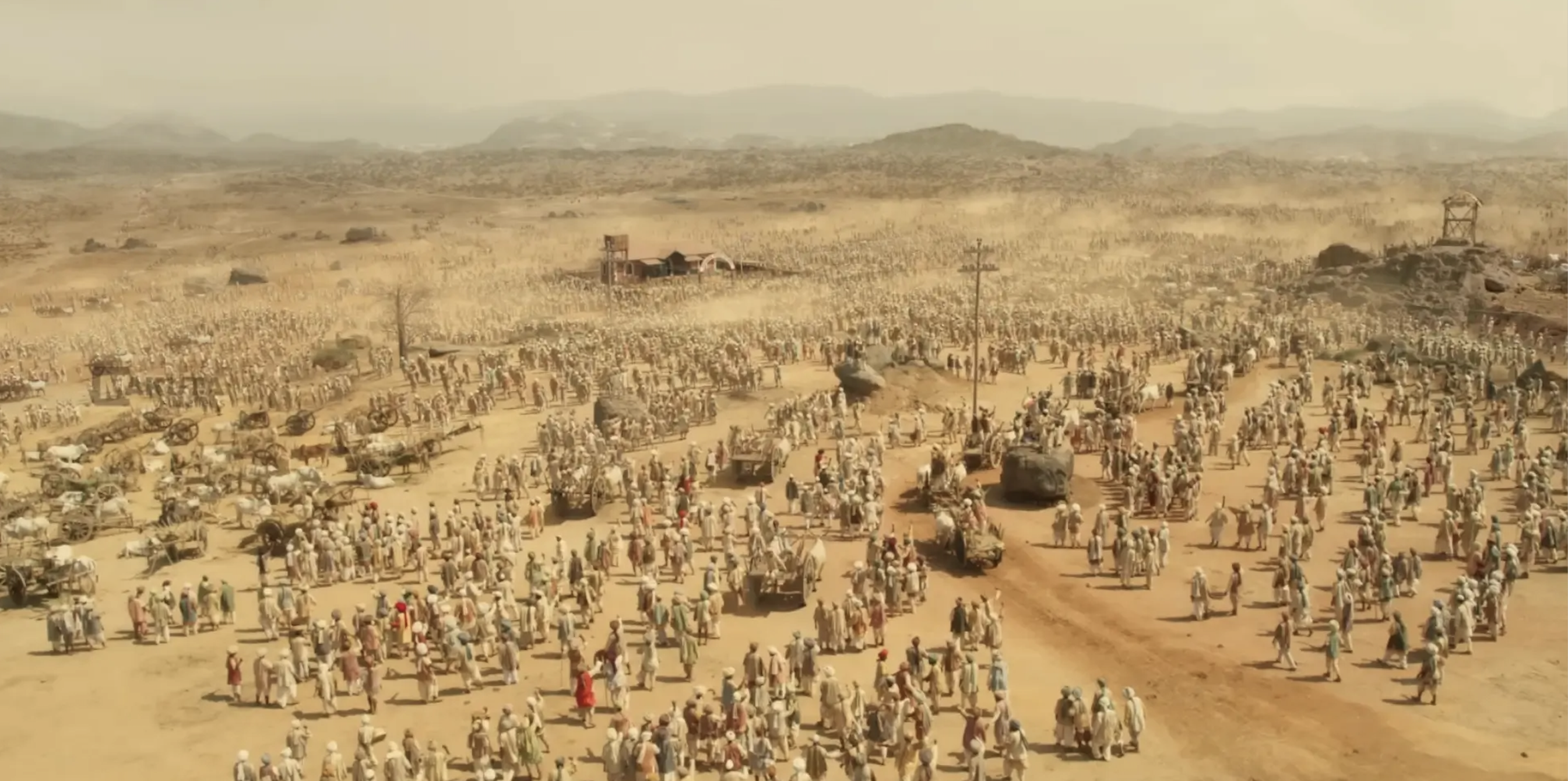“Madness is the most disgraceful thing that can overtake a wild creature.”
— Rudyard Kipling, The Jungle Book
It is often said that cinema acts as a mirror to the society we live in. At times, it depicts issues faced by society, and sometimes, it chooses to escape from reality, taking the viewer to an imagined territory. It is difficult to identify when society is influenced by cinema or vice versa.
Films depict a complex society with numerous cultures, identities, and issues in various ways. Sometimes, these representations raise important questions. In recent times, films like Kabir Singh (2019) or Animal (2023) attracted the public as well as scholarly scrutiny regarding the depiction and politics of gender in Indian cinema.
In a recent interview, actor Naseeruddin Shah said, “Mardon ki insecurity badh rahi hai, isiliye ab aur zyada zor diya jaa raha hai hyper masculinity ko…” (the insecurities of men are increasing and that is why there is a push for hyper-masculinity.)
Indian society is patriarchal, and the Hindi film industry, in particular, is a male-dominated industry, where the majority of the technical crew, including filmmakers and producers, are male. The ‘male gaze’ dictates how the interplay and politics of gender are represented in our cinema.
As a student of history, my work allows me to go back in time to see how the conception and representation of masculinity has evolved over the years. When I think of films like Animal or Kabir Singh, I often compare them with the image of the ‘angry young man’ that emerged in the 1970s.
Also read: Prasanth Vijay’s Film ‘Daayam’ Unravels Kerala’s Gender Paradox Amidst Grief and Patriarchy
Expressions of anger
The angry young man was violent but, like Robin Hood, a friend of the poor and an enemy of the rich. The figure of the angry young man was essentially anti-establishment and stood for the welfare of the poor. Similar to Amitabh Bachchan, Naseeruddin Shah is depicted in art house films such as Albert Pinto Ko Gussa Kyon Aata Hai (1980) by Saeed Akhtar Mirza as a young man frustrated with the system but non-violent.
Prakash Mehra’s Zanjeer (1973) created the image of the angry young man played by Amitabh Bachchan. The 1970s were more turbulent and testing than any other in India’s history, characterised by increasing unemployment, poverty, and political violence. It was the time when, on one side, the Indian armed forces had just emerged victorious in the Bangladesh Liberation War against Pakistan, and on the other side, the daughter of independent India’s first Prime Minister Jawaharlal Nehru, Indira Gandhi, was voted in. The evocative slogan of the decade was, ‘Indira Lao, Garibi Hatao’ (Elect Indira, Eradicate Poverty).
The terrible drought in East India in the mid-1960s impeded India’s development and aggravated poverty, resulting in the country’s increased reliance on western powers for aid. The 1970s witnessed the hollowness of the government’s ‘Garibi Hatao (Eradicate Poverty)’ slogan, juxtaposed against the harsh realities of daily life, marked by inflation, escalating unemployment, and pervasive political and financial corruption. Indifference towards the burgeoning student movements nationwide further fueled a sense of helplessness.
The common man was disillusioned and angry with the system, and at that time, emerged the figure of Inspector Vijay Khanna (played by Bachchan). This film paved the way for a new kind of hero – a brooding, angry, despondent Bachchan, as opposed to the romantic, charming Rajesh Khanna or Dev Anand. The ‘angry man’ persona consciously reshaped notions of masculinity, stardom, and political discourse on the screen, leaving an indelible impact on subsequent developments in cinema.
What Bachchan’s Vijay Khanna was to commercial cinema, Naseeruddin Shah and Om Puri were to art house cinema. Both of them were considered to be the best of their time. They immortalized characters like Albert Pinto from Saeed Akhtar Mirza’s Albert Pinto Ko Gussa Kyon Aata Hai? or Bhiku Lahanya from Govind Nihalani’s Aakrosh during the 1980s.
The 80s were arguably a lost decade, with Indira Gandhi pursuing her gambits of nationalising banks and loan melas when she should have been ushering in economic reforms and deregulation.
In the movie Albert Pinto ko Gussa Kyon Aata Hai?, the central themes of the narrative revolve around Pinto’s struggle to determine his life’s purpose beyond repairing expensive cars for affluent clients at the garage. Pinto’s lack of awareness regarding the social and political dimensions affecting his family leads to the imprisonment of his unemployed younger brother, exploited by local criminal elements.
Initially, Pinto’s anger seems rooted in selfishness, but it transforms, symbolising a broader discontent. This discontent is reflective of the imminent expression by real Mumbai textile workers, embodied in the politically active yet defiant figure of his father.
As the film unfolds, witnessing his brother’s incarceration, his father’s loss of dignity, and the company’s malicious attempts to discredit the workers’ union and their right to strike, Pinto redirects his anger toward a more fitting target – the political and economic elite. This pivotal moment is captured in a cinema setting, with Pinto challenging the political address of the company management. Shouting at the cinema screen, Pinto faces opposition from a disgruntled audience, and Mirza subverts the concept of political acquiescence by implicating the broader society and empowering Pinto.
Characters like Albert Pinto and Vijay Khanna emerged as compelling figures, raising thought-provoking questions through their expressions of anger, which symbolically represented a more profound discontent. Their narratives served as a lens through which the audience could analyse and comment on the intricate social and political landscapes prevalent during the tumultuous decades of the 1970s and 80s.
Also read: K.G. George Was a Chronicler of Society’s Patriarchal Morality and Maker of Thoughtful Films
The present cinematic landscape
Fast-forward to the present cinematic landscape, and a disconcerting pattern reemerges – women are once again relegated to peripheral roles, their significance measured solely by their contributions to the male character’s storyline.
Film critic Anna M.M. Vetticad delves into this issue, particularly in the context of Pushpa, elucidating how, in a contemporary India marked by religious bigotry, language chauvinism, and caste divisions, potential unifying factors encompass misogyny, patriarchy, crass female objectification, and a pervasive desire to control or own women.
A historical examination of commercial cinema reveals a recurrent portrayal of women as objects of desire – depicted as helpless, conservative, and confined to stereotypical ‘domestic’ roles. Their primary function has often been to bolster the male protagonist’s narrative and personify an idealised femininity. In some instances, the female body becomes a tool for attracting male audiences, exploited through item songs and dances adorned with elaborate costumes.
Examining recent films such as RRR, Pushpa, Kabir Singh, or Animal, a common thematic thread emerges – the portrayal of an exaggerated form of masculinity that markedly deviates from reality. The violence and anger depicted in these films seem to function as an escapist outlet, prompting contemplation on the underlying reasons for the increasing appeal of such violently toxic masculine representations in contemporary Indian cinema. This phenomenon invites a broader conversation about societal norms, expectations, and the evolving dynamics of gender portrayal on the big screen.
Eshan Sharma is the founder of Karwaan: The Heritage Exploration Initiative.












